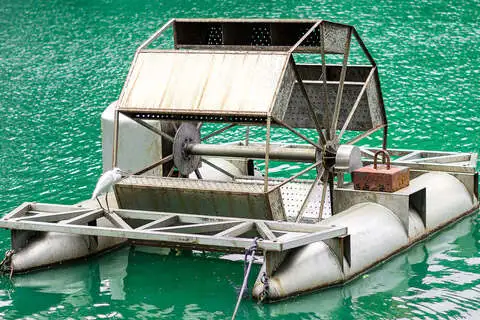Systems Standards

Wastewater systems standards address complete systems dealing with wastewater, rather than individual components, procedures, or tests. Systems included range from those used for diversion and irrigation, to closed-loop biological wastewater systems. Used in conjunction with or containing parts detailed in other wastewater standards, wastewater systems provide a bigger picture for wastewater management.
IAPMO PS 59-2016ae1
Wastewater Diverter Valves and Diversion Systems
This standard covers wastewater diverter valves and diversion systems and specifies requirements for materials, physical characteristics, performance testing, and markings.
ASTM E2635-14
Standard Practice for Water Conservation in Buildings Through In-Situ Water Reclamation
1.1 In an effort to help meet growing demands being placed on available water supplies and water treatment facilities, many communities throughout the United States and the world are turning to water reclamation and reuse. Water reclamation and reuse offer an effective means of conserving the Earth s limited high-quality freshwater supplies while helping to meet the ever growing demands for water in residential, commercial, and institutional development. This practice sets forth a practice for water reuse in buildings and related construction, encompassing both graywater and blackwater in-situ reclamation. 1.1.1 This practice specifies parameters for substituting reclaimed water in place of potable water supplies where potable water quality is not required. 1.1.2 This practice specifies limitations for use of reclaimed water in-situ. It is not intended for application to the use of reclaimed water delivered from an offsite municipal wastewater treatment facility. 1.1.3 This practice specifies performance requirements for in-situ reclaimed water systems. It does not specify particular technology(ies) that must be used. A variety of technologies may satisfy the performance requirements. 1.1.4 This practice specifies requirements for water stewardship associated with in-situ water reuse. Consistent with Guide E2432 and for purposes of this practice, water stewardship includes both quantity and quality impacts on water used in buildings. 1.2 Implementation of this practice will require professional judgment. Such judgment should be informed by experience with sustainable development, including environmental, economic, and social issues as appropriate to the building use, type, scale, and location.
IAPMO IGC 276-2019
Bundled expanded polystyrene synthetic aggregate units
This standard covers physical requirements and tests for types of material and othersignificant properties in addition to a general description of materials used. Certainfeatures of construction and finish of the final product are also given, together wit
IAPMO TS 01-2011e1
Mecanical seat toilets with or without integral wastewater tanks for use in recreational vehicles
This standard covers physical requirements and tests for materials, components, proper design, operation and other significant properties of construction and finish, and provisions for proper installation of the finished product, together with methods of marking and identification. The mechanical seal toilets with or without integral wastewater tank, covered by this standard, are those units which are connected to the potable water system, the sanitary drainage system, or both and intended for use in recreational vehicles when installed in accordance with applicable code requirements.
ISO 15749-1:2004
Ships and marine technology - Drainage systems on ships and marine structures - Part 1: Sanitary drainage-system design
ISO 15749-1:2004 is valid, in conjunction with ISO 15749-2 to ISO 15749-4, for planning and designing drainage systems which evacuate wastewater from accommodation and commissary areas (sanitary drainage) on ships and marine structures. Drainage of weather decks, cargo holds and swimming pools is covered by ISO 15749-5. This series of standards takes into consideration the basic regulations and minimum requirements concerning hygienic requirements and the protection of the marine environment. ISO 15749-1:2004 does not apply to pipe systems carrying oily, chemically contaminated wastewater capable of forming flammable gas/oxygen mixtures.
ASTM F2044-09(2019)e1
Standard Specification for Liquid Level Indicating Equipment, Electrical
1.1 This specification covers the requirements for electrical liquid level indicating equipment for shipboard low pressure and high pressure tanks containing freshwater, feed water, potable water, seawater, wastewater, diesel fuel, lubricating oil, contaminated oil, refrigerants, JP fuels, and various other fluids. Application includes compensating tanks in which the equipment must locate the interface. 1.2 Each liquid level indicating equipment typically consists of the following components: (a) One or more sensing devices; (b) Flexible interconnections, if needed; (c) Primary indicator panel assembly; (d) Auxiliary indicator panel assembly, when required; and (e) Portable indicator panel assembly, when required. 1.3 Special requirements for naval shipboard applications are included in the Supplementary Requirements section to this specification. 1.4 The values stated in SI units are to be regarded as standard. Inch-pound units are provided for information only and are not considered standard. Where information is to be specified, it shall be stated in SI units. 1.5 This standard does not purport to address all of the safety concerns, if any, associated with its use. It is the responsibility of the user of this standard to establish appropriate safety, health, and environmental practices and determine the applicability of regulatory limitations prior to use. 1.6 This international standard was developed in accordance with internationally recognized principles on standardization established in the Decision on Principles for the Development of International Standards, Guides and Recommendations issued by the World Trade Organization Technical Barriers to Trade (TBT) Committee.





